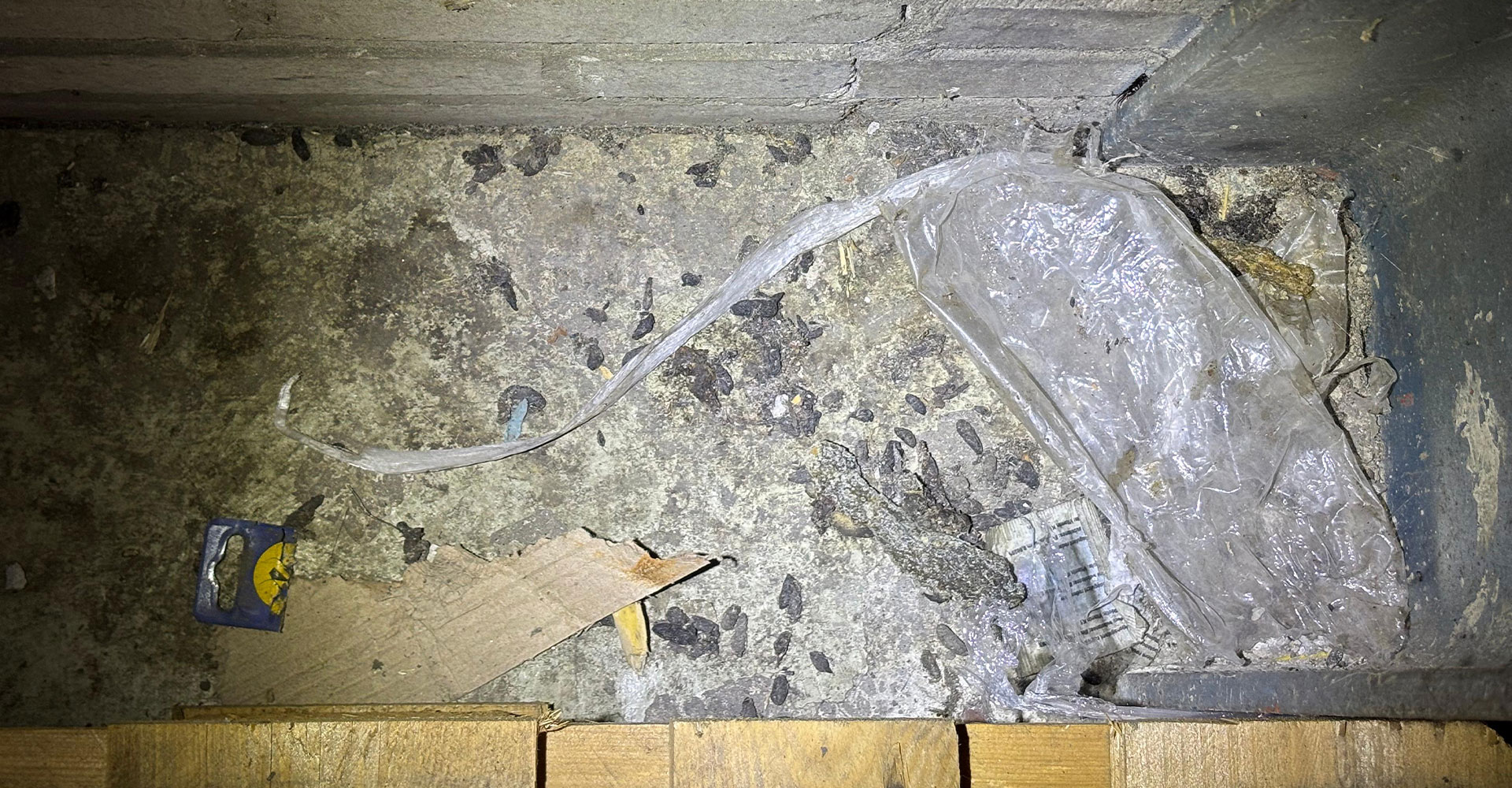The brown rat primarily lives outdoors around houses and water, while the black rat mainly resides indoors in warehouses or on industrial premises. Rat infestations can often be identified by:
Identifying
- Rat feces are often oval and about 2 cm long.
- Rats are rodents and must gnaw. Wooden and plastic objects as well as wiring and insulation materials can be gnawed on.
- Rats make nests from available materials such as paper and plastic.
- Rats sometimes move into gnawed holes in walls and ceilings. Holes as large as 5 cm allow rats to enter.
- Rats are naturally afraid of people and new objects. Yet they can sometimes be seen walking. Their tails are longer than their bodies. Strong ammonia-like odor.
- Rats eat 15 to 30 grams of food per day and drink 50 ml of water per day. They cannot survive without water. Mice on the other hand can obtain fluids from their food.
Warning!
Rats can transmit diseases through their droppings and bites. Leptospirosis, also known as Weil’s disease, is one of the significant and most common diseases a rat can transmit to humans. Symptoms can range from mild headaches to lung bleeding and kidney failure.

The problem
- Rats can pose a threat to public health due to the diseases they carry (Weil’s disease).
- Rats can seriously contaminate food by gnawing it and contaminating it with urine and feces.
- Rats contaminate food supplies with droppings and urine.
- Rats cause gnawing damage to various materials and products
- including pipes and cables
- leading to potential short circuits.
One of our staff members will conduct an inspection to determine the resting and feeding places of the pests. After this inspection, the extermination process will take place.
If you have observed rats during inspection, call or email Maritime Disinfection Services.
During the extermination process, the service worker will place bait stations on the walking route, hiding places or nesting places of rats. Acces holes and cracks where rat traces are visible will be sealed with elastic pest-proofing paste.
Once the extermination is complete, the service worker will provide advice to prevent new infestations. An integral part of our service is providing a self-help kit. This kit allows for more effective control during periods when professional pest control is not feasible.
